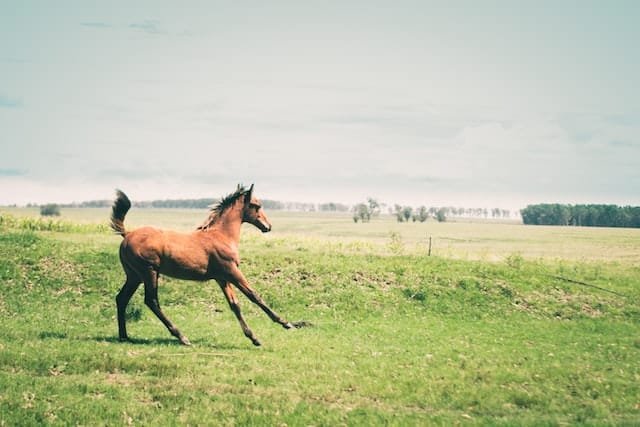Horses are herd animals. This means, in the wild, they live in groups and depend on one another for survival. Even though, horses have been domesticated for thousands of years their herd mentality remains intact and still affects their daily lives.
In this article, we’ll review herd behavior in horses, understand why horses prefer being in herds, study horse herd ranks or horse pecking order and learn how horses living in a herd communicate with each other.
Why do Horses Live In Herds
As horses evolved over 60 million years from their oldest direct ancestor the Eohippus (which was the size of a modern fox) to the modern horse – the Equus Caballus – they adapted to a changing environment and developed multiple mechanisms to protect themselves from their natural predators. One such mechanism was living in a herd.
There is strength in numbers and by being part of a herd, horses are able to increase their chances of survival. When a herd is attacked by a predator, the herd instinct is to stand together and face the predator as one unit. This way, the horses can intimidate the predator and hopefully scare it off.

Herd behavior in horses also involves the stronger members of the herd protecting the weaker ones. In the wild, herd stallions (male horses) will protect their herd of mares (female horses) and foals (baby horses) from predators and other herd stallions.
When the herd travels the stronger horses will surround the herd to protect them from danger while the weaker ones including the young, old, and sick horses, are in the middle where they can be better protected.
The Basics of Herd Behavior in Horses
Horses are social animals. This means they need companionship and interaction with other horses (or at least other animals) to live happy and healthy lives.
When a horse is isolated from other horses or animals, it can experience significant psychological stress. Manifestations of psychological stress in horses can include boredom, loneliness, depression and anxiety.
In domesticated situations, a sole horse will crave companionship. If you have just one horse you may want to consider getting another animal as a companion. It doesn’t need to be another horse but could be a docile dog, a donkey or even a goat. In fact, goats can help calm down horses and so can be an ideal, non-competitive companion.
Herd behavior in horses also involves making ad-hoc herds. Horses living in close proximity to one another will often form a herd. A herd typically contains one or more stallions, mares and their offspring.
Each herd typically has a dominant stallion referred to as the “herd stallion” and a few other less dominant stallions. Interestingly, each herd is led not by the dominant stallion but by a dominant mare.
The role of the stallions is to look out for danger, fight off predators and mate with the mares. The role of the “lead mare” is to look out for the day-to-day needs of the herd (her family) which includes finding food and water as well as caring for the well-being of the young and old.
For foals, the herd is an extended family and everyone in the herd contributes to their care. Herd behavior in horses involves protecting the foals from predators and other herds of horses. They will also help to socialize them and teach them the skills they need to survive.
This herd mentality is very strong in horses. When one horse in the herd is threatened or startled,
the rest of the herd will usually follow suit. This is because horses are very attuned to the emotions and body language of the other horses around them.
The membership of the herd keeps changing as horses leave to find their own herd or are kicked out by the herd stallion. Foals typically stay with their mothers until they are old enough and strong enough to leave and find their own herd.
Horse Herd Ranks – Understanding the Horse Pecking Order
The social structure of a herd is maintained through a strict hierarchy or “pecking order.” The herd stallion is at the top of the hierarchy, followed by the other adult stallions, then the adult mares, and finally the young horses.
Herd behavior in horses involves sticking to the pecking order. This pecking order provides stability to the herd and ensures that each horse knows its place. The hierarchy is maintained through ritualized displays of aggression and submission.
For example, when a lower-ranking horse challenges a higher-ranking horse, the higher-ranking horse will usually respond with an aggressive display such as kicking, biting or chasing the lower-ranking horse away.
These displays usually resolve the issue without any actual fighting taking place. However, if the lower-ranking horse persists in its challenge, or if the higher-ranking horse is feeling particularly threatened, a fight may break out.
Since the pecking order is a form of dominance, it is seen in other aspects of herd behavior in horses. For example, if some members of a herd wander too far away from the rest of the herd, they will usually be rounded up by a more dominant member of the herd.
This is especially true if a mare has wandered off too far away from the herd. A stallion or the herd mare will usually go after her and herd her back to the main herd. The intention is to ensure that she doesn’t meet a stallion from another herd.
Horse Herd Communication
For any social structure, like a herd, to function properly, there needs to be some form of communication. And herd behavior in horses wouldn’t be complete without a clear communication system between horses.
Horses communicate with each other through a variety of sounds, body language and smell.
Sounds include whinnying, nickering, and squealing. Whinnying is usually done to greet other herd members or to call for help. Nickering is a softer sound that is usually used as a way to reassure other herd members. Squealing is usually done in situations of fear or pain.
Body language can include a variety of different postures and gestures. For example, ears may be flattened against the head in a gesture of aggression or annoyance. Or, the opposite may
be true and the ears may be perked up and forward in a friendly gesture.
This ability to read body language can sometimes lead to trouble. For instance, if another animal makes a movement that is not meant to be aggressive but if the horse interprets it as aggression, this could spook the horse and cause an accident. For instance, horses are not instinctively afraid of snakes and if a horse comes across a snake it will usually ignore it. But if the snake makes a sudden movement, the horse may interpret this as aggression and freak out.
Horses also get annoyed with each other. In any social structure, members sometimes get fed up with others. When horses are fed up with each other they may lightly bite each other. This is not intended to hurt but is a way of saying “I’m fed up”.
A horse will often communicate happiness by holding its head high up and wagging its tail.
Horses also communicate through smell. They have a very acute sense of smell and can use it to identify other herd members, as well as to figure out the hierarchy within the herd.
Final Thoughts
Horses are social animals and prefer to live in herds rather than by themselves. In the wild, horses will often automatically form herds and live together.
With domesticated horses, it is up to the owner to provide them with companionship. Just remember that herd behavior in horses is very strong, even amongst domesticated horses.
Herds provide companionship, protection from predators and a chance to procreate. The herd’s pecking order helps maintain order and stability within the herd.
Horses also communicate with each other through a variety of sounds, body language and smell. Communication is a key aspect of herd behavior in horses.



